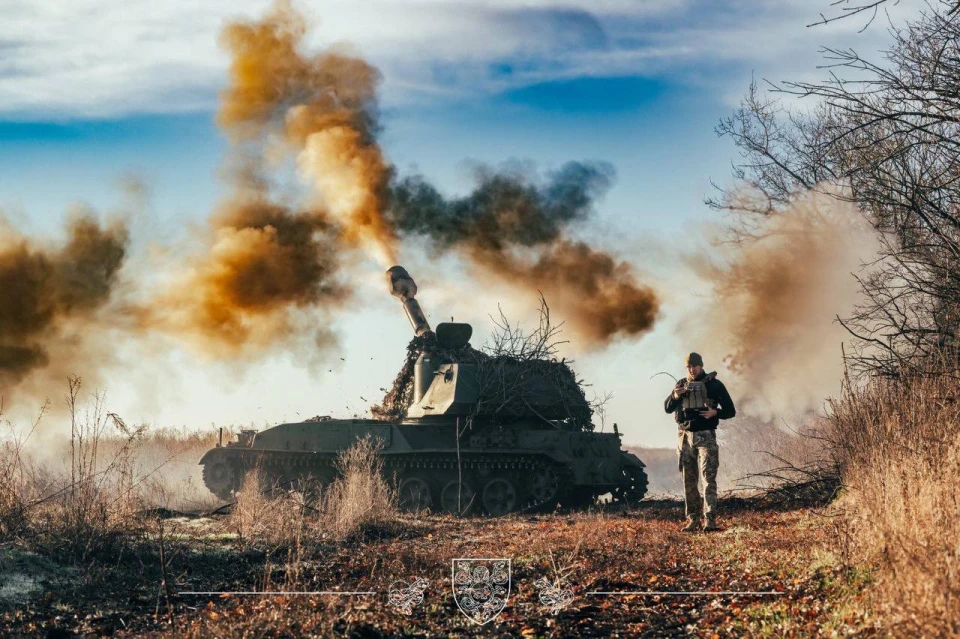
Ukrainian commander accuses New York Times of 'criminal manipulation' in article on Dnipro River crossing
Robert Brovdi (call sign Magyar), a Ukrainian serviceman, platoon commander of the second assault company of the 28th Separate Mechanized Brigade of the Ukrainian Armed Forces, and founder of the Birds of Magyar aerial reconnaissance unit, accused the New York Times of “criminal” manipulation in a recently published article
The New York Times has published an article in which it alleged that Ukrainian authorities claim marines have established strongholds on the Dnipro River, but marines and soldiers argue these accounts are overstated. The article states that soldiers and marines who have participated in the river crossings describe the offensive as brutalizing and futile, with some going further, calling it “a suicide mission.” It alleges that Ukrainian commanders' poor preparation and logistics have led to the decimation of a battalion serving in the direction and that the brutal conditions are degrading morale and soldiers' support.
Magyar responded to the article in a video, published on his Youtube channel.
The military believes that the article is a manipulative piece, with a way of presenting information that is fit rather for a Netflix movie than a comprehensive analysis of the overall picture.
“To film the emotional impressions of militaries who returned from the left bank? Okay, okay for a Netflix movie. But to film them for a generalizing piece of cr*p (*conclusion) regarding the position is a shameful criminal manipulation of the readers' consciousness,” he stated.
He further likened the journalists' interviewing manner with Ukrainian soldiers to interviewing someone in a situation where the relatives of a deceased driver blame freeway builders for allowing high-speed conditions.
“It is also exactly as if the relatives of a driver who had just died in a road accident on the freeway appealed to the Builders of that freeway, with accusations that the road provides for movement on it at a speed of 130 km/h, in contrast to roads of ordinary use, where the speed limit is 80 km/h and to blame the death of that driver on the builders for creating conditions for super-fast driving, to ask their impressions and make generalizing conclusions for the whole world…I am talking about misrepresentation (distortion) from a journalistic context and presenting material with a conclusion about the fallacy of the idea of liberation on the example of human suffering, around losses,” the fighter provided an analogy.
Magyar further shared his opinions on what might be the reasons for the New York Times publishing such a piece.
“For what purpose is this done? To explain the impracticality of giving us your weapons? Weapons, 90% of the value of which remains in money, and raises and strengthens your economy, thanks to the presence of sustained orders?” he questioned.
The military then suggested alternative topics for coverage.
“Why not comment on the undisclosed losses that are further burdening this small piece of land? Bunker old man (Putin - ed.) claimed the absence of losses for a distinct 104th airborne division. However, an entire division is now no more, according to the enemy's spokespersons, due to that insignificant bridgehead. Why remain silent about the declassified 810th brigade of marines, which fought fiercely for hundreds of hectares of land, paying with their blood?” he suggested and added “Why overlook the peculiar circumstances surrounding the demise of General Zavadsky, the former commanding general of the fourth tank division and the more recent deputy commander of the 14th army? Did he perish by exploding on an enemy mine or otherwise?... Investigate in that direction, towards that facet of the war! Conduct interviews with the stormtroopers of those who callously occupy Ukraine, capturing their impressions of residing and moving through the territories they have unlawfully seized. Share these insights with the entire world; it will undoubtedly generate significant interest and demand.”
- News














































